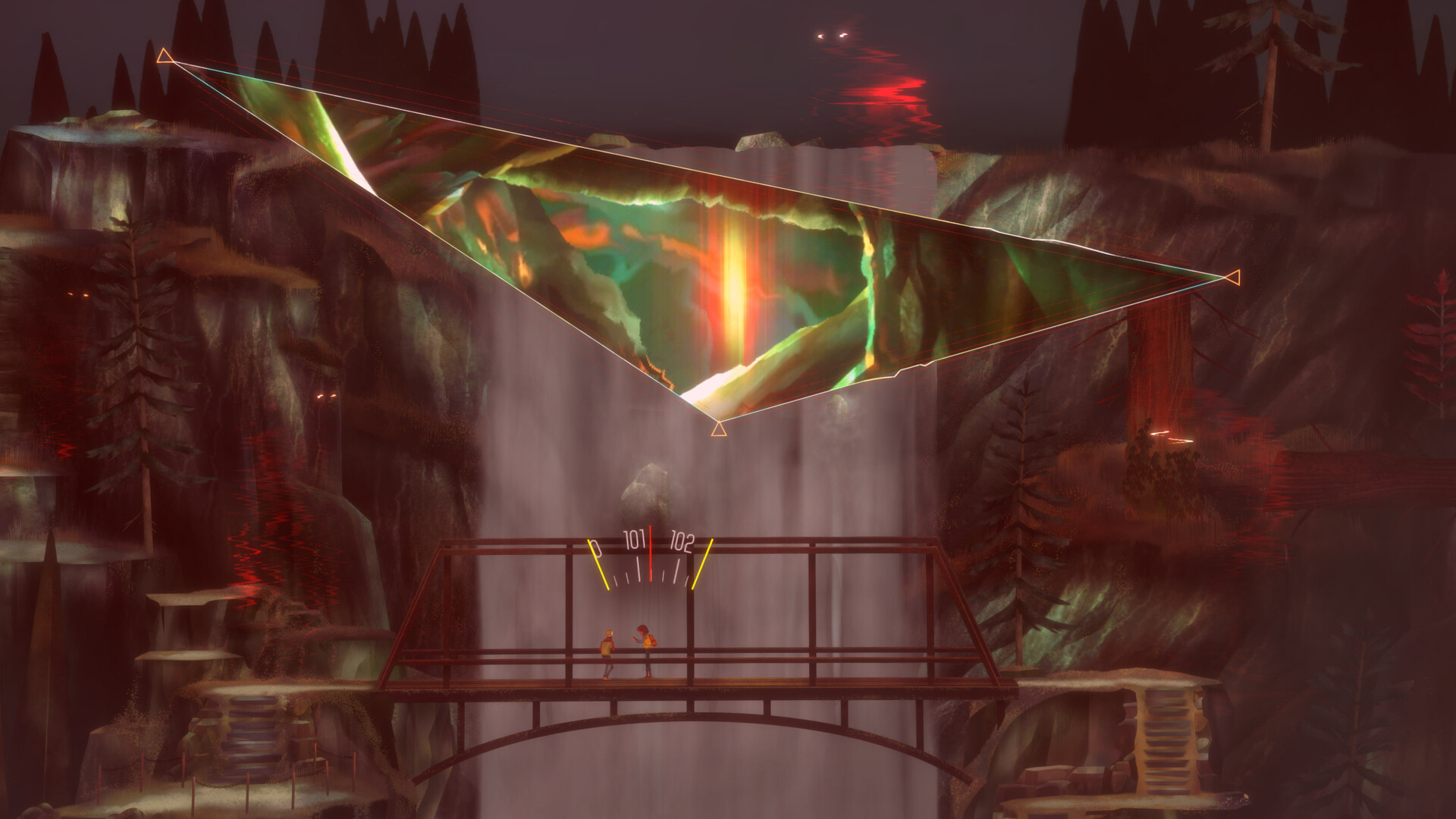The original Oxenfree is a textbook example of a an indie gem- a small team taking a unique idea and crafting it into a special game that lives long in the memory. Expectations from its sequel have been high, and the wait for it to launch has been quite a long one, coming seven years after the release of its predecessor, but Oxenfree 2: Lost Signals doesn’t buckle under the pressure in the slightest. If anything, it takes the foundations of the first game and builds upon them yet another excellent story that not only stands toe-to-toe with what preceded it, but even surpasses it.
Set five years after the events of the first game, Oxenfree 2 puts players in the shoes of a new protagonist in Riley, an environmental artist, who has taken a job investigating electromagnetic anomalies on the small island town of Camena, her childhood home, which also lies in the vicinity of Edwards Island, the setting of the first game. Not long after arriving and meeting up with Jacob, who accompanies her throughout the rest of the journey, Riley discovers that things are way more messed up and complicated than she could have expected. With everything from mysterious radio signals and portals in the sky to a cult operating in the shadows and terrifying visions and supernatural entities afoot, it quickly becomes clear that if Riley and Jacob don’t find a way to fix things, the consequences will be disastrous, to say the least.
“The story is Oxenfree 2’s biggst strength.”
Unsurprisingly, the story is Oxenfree 2’s biggst strength. It’s a masterclass in building tension, mystery, and palpable dread, and above all, in getting truly bizarre without ever feeling like it’s losing touch with reality. From the very first second, the game does an excellent job of raising questions, and as it progresses, it doles out the answers to those questions in even more satisfactory fashion. Unpeeling the layers of the tale it spins remains a compelling experience from beginning to end, thanks to how well Oxenfree 2 strikes that balance. Plenty of it also ties in strongly with the first game’s story, especially as you progress further into the game, and though the original Oxenfree isn’t exactly required reading, having knowledge of its story will definitely enrich Lost Signals’ own narrative that much more.
The strong horror vibes on display here also contribute to that significantly. Camena is an incredibly atmosheric location and is built up as a small, isolated town that feels like it has its own history and distinct personality, but by injecting psychological and techno-horror elements into proceedings, Oxenfree 2 elevates the atmosphere to a whole another level. From mind-bending time loops to conversations with possessed characters to encounters with projections of the supernatural beings that the story revolves around, the game does an excellent job of keeping players on the edge of their seat, in a way that even if you’re not outright terrified, you will, at the very least, be deeply unnerved by what you’re witnessing on the screen.
Just as strong as the larger tale it spins up and the horror vibes it exhibits is the more personal and intimate side of Oxenfree 2’s story. The core duo of Riley and Jacob is an excellent one, with Riley in particular being an instantly likeable protagonist. Both of them, as well as the game’s rich and varied cast of supporting characters, grow in complexity and nuance as the story progresses and you learn more about them and their lives, which, combined with witnessing (and contributing to) the shifting dynamics of their relationships makes for a captivating experience. That, combined with excellently written dialogue and top-notch voice acting, means it’s hard to point at a single weak link in Oxenfree 2’s cast of characters.
“From mind-bending time loops to conversations with possessed characters to encounters with projections of the supernatural beings that the story revolves around, the game does an excellent job of keeping players on the edge of their seat, in a way that even if you’re not outright terrified, you will, at the very least, be deeply unnerved by what you’re witnessing on the screen.”
And of course, what truly allows all of that to shine in Oxenfree 2 is its excellent dialogue system. As those who’ve played the first game will happily tell you ever chance they get, the dialogue system here is easily one of the best and most effective you’ll find in a game. That’s thanks in great part to how natural every conversation feels. People interrupt each other, trail off in the middle of sentences to change topics, pick up old threads- almost like they’re, you know, actual people. All of it happens during gameplay, allowing you to move around, explore, and look at things while you’re having conversations with other characters, and it all gels together wonderfully. You now also have access to a walkie-talkie, which allows you to switch between channels to converse with different characters and dig deeper into the story. From how it shapes Riley’s character to how it allows you to meaningfully impact the narrative to how it enriches all aspects of the storytelling, Oxenfree 2’s dialoge system deserves massive props for no shortage of things.
Outside of dialogue options, Oxenfree 2 keeps things pretty simple on the gameplay front, just as its predecessor did. Presented as a 2.5D sidescroller, Oxenfree 2 allows you to explore a pretty large map at your own pace. Of course, by its very nature, it’s not exactly sprawling, and there isn’t a ton of stuff to do, but light sprinklings of traversal mechanics, some exploration and optional activities, and the odd puzzle here and there ensure that, in spite of how simplistic and straightforward it remains from beginning to end, the core gameplay loop in Oxenfree 2 always feels oddly compelling.
There are some issues to speak of here, of course- for instance, you’ll be doing a fair bit of backtracking and going through areas that you’ve already visited, which can occasionally get a bit cumbersome, especially thanks to the slow movement speed (though the conversations Riley has with other characters during these sequences do curtail some of those issues). Meanwhile, Oxenfree 2’s controls can also get a little finnicky on some occasions. That mostly materializes in the form of the game failing to read your inputs or the occasional depth perception issue brought about by the game’s 2.5D approach. Though not too persistent or even all that problematic in the grand scheme of things, these issues are certainly noticeable.
“What truly allows Oxenfree 2’s story and characters to shine is its excellent dialogue system.”
When you’re done with Oxenfree 2 though, chances are that you’ll find it very easy to forgive and overlook the few flaws that it does have. It’s not a terribly long game, but just like its predecessor, it laves a lasting impression with everything that it has to say and show throughout the duration of its runtime. By keeping its core gameplay mechanics simple and uncomplicated, it delivers a fun, zen loop that, above all else, allows the game’s biggest strengths to flourish that much better. And those biggest strengths, namely the story, storytelling, and dialogue system, truly are the highlights of the experience here. All of it comes together in an expertly crafted game that, in spite of its short runtime, isn’t one that I’m likely to stop thinking about anytime soon.
This game was reviewed on the PlayStation 5.
Oxenfree 2: Lost Signals Review – Perfect Wavelength
Source: News Beginning



0 Comments